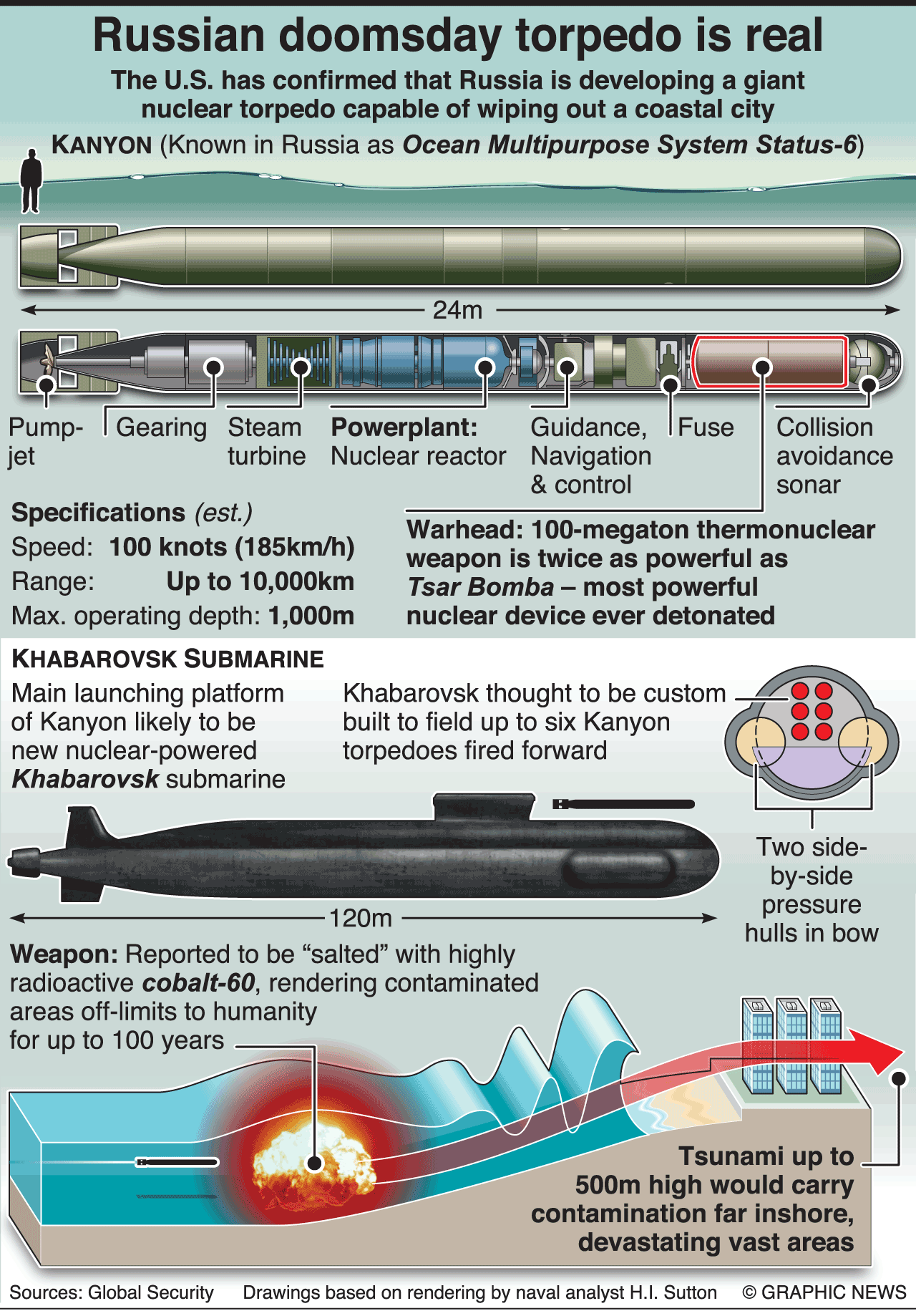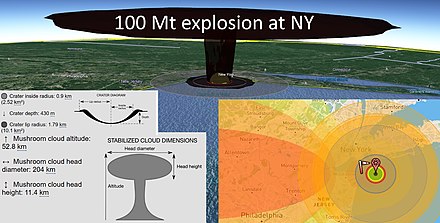‘Poseidon’: Russia’s New Weapon Is Designed To Unleash Radioactive Tsunamis (video)
Medeea Greere, an independent publisher, is now on Telegram at https://t.me/AMGNEWS2022 and exists only on reader support as we publish Truth, Freedom and Love for public awareness. Thank You for your support!
On the initiative of the President of Russia, the whole country was choosing the final name of the Status 6 project. More than 7.5 million Russians took part in the all-Russian People’s Choice vote, which lasted 22 days. The name Poseidon had the most votes.
Before the advent of Poseidon, the Pacific and Atlantic oceans were a reliable buffer zone for the United States. But now everything has changed; Putin has flipped the game – the waters on both sides of the North American continent are turning into a source of danger.
The West Coast, where the Juan de Fuca lithospheric plate dives under the continent of North America, becomes especially vulnerable. Up to 30% of the US economy and almost the entire IT industry are concentrated in this region. Poseidon is capable of depriving the United States of economic and political power and throwing the country back decades in economic development with just one strike.

How do you stop a nuclear-powered torpedo designed to bury enemy cities under a tsunami?
Russia’s Status-6 “Poseidon” torpedo has excited the fears — or the overactive imaginations — of Russia’s enemies. Calling it is a torpedo is a misnomer. While the precise capabilities of the weapon are mysterious, it appears to be about 80 feet long — which makes it more like a mini-submarine or an underwater ballistic missile.
Poseidon is propelled by a nuclear reactor to a speed of 115 miles per hour and operates at deep depths up to 3,300 feet. It is armed with a massive 100-megaton warhead powerful enough to generate a giant tidal wave to destroy coastal cities.
How useful such a weapon would be is debatable. Poseidon is too slow, compared to ICBMs and bombers, to be useful in a first strike or an immediate retaliatory strike. Moving at high speeds may make it so noisy that anti-submarine can detect it, and its autonomous nature brings up all the questions about armed robots (especially ones carrying mega-bombs).

Nonetheless, as a psychological weapon, it’s brilliant. There is something frightening, like a Hollywood monster movie, about the thought of a robot tsunami-bomb creeping along the sea floor.
But for every vampire, there is a stake waiting to slay it through the heart. H I Sutton, a naval analyst who runs the Covert Shores blog on naval affairs, offers some ideas on technology that NATO can employ to halt Poseidon.
Sutton assumes that Poseidon’s “operating modes and route planning will likely be simple (read reliable) and relatively direct, relying on speed and depth for survival.”
Also: Blackout USA: What Would Happen in an Apocalyptic Blackout?
That being the case, one countermeasure would be to seed the seabed with networks of sensor-mines to detect and destroy Poseidons.
“Ideally the sensor networks would include their own effectors (e.g. torpedo armed mines) to minimize the delay from detection to neutralization, since the targets will be moving much faster than traditional submarine targets,” Sutton writes.
Sutton also wonders whether Poseidons could be killed by long-range hypersonic glide vehicles launched by U.S. Navy submarines.

“The payload could be next-generation lightweight torpedo or nuclear depth charge similar to the retired Subroc [rocket-launched anti-submarine torpedo] weapon,” he writes.
“The short flight time and long range of this type of system would allow kills far outside realistic ranges for torpedoes and allow submarines operating in the North Atlantic to react to Poseidon launches detected in the Arctic region, hitting the target while it is still reasonably near to the sensor which detected it.”
Stopping weapons like Poseidon will likely require Western navies to develop a new generation of torpedoes.
“The current families of US Navy and Royal Navy torpedoes were developed to counter fast deep-diving Russian submarines,” writes Sutton.
“While they are highly capable, the even greater combination of speed and depth of Poseidon means that new weapons will need to be developed. These are likely to be characterized by increases in range and autonomy, blurring the distinction with Unmanned Underwater Vehicles (UUVs).”












1 Comment
These are the weapons of mass destruction for the end times, I believe. Wake up to rea